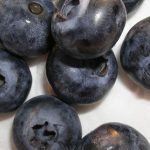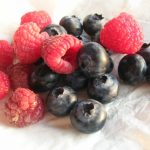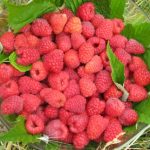
Name
Small Fruits
Seal of quality

Typical food-farming product
Description
“Piccoli Frutti Cuneo” designates solely fruits pertaining to the following species and in possession of the requirements established by the set of disciplinary regulations.
Raspberry ( Rubus idaeus ) with the varieties: Summer, Fairview , Malahat, Glen Lyon, Glen Ample, Tulameen Polka, Himbo top, Heritage, Comtesse, Rossana.
The shapes of these Fruits are short conical, roundish conical, and long, typical of the cultivar. Inside the packaging, the fruits have to be of a homogeneous size and at regular levels of ripeness. The outer colouring of the fruits must be bright – deep red and/or orange yellow typical of the cultivar; it is possible to sell fruits with small pinkish marks (not yet ripe) close to the stem. The fruits must be intact, not bruised and not deformed, and must be healthy, free from pathological alterations, clean and with no anomalous external humidity, strange odours or taste. Minimum sugar content value is 7.0° Bx. Minimum titrateable acidity 15 meq/100 g.
Currant ( Ribes rubrum) with the varieties: Van Tets, Junifer, Werdavia, Cassa, Rovada, Blanca, Red Poll, Roodneus, Augustus.
The typical characteristics of the cultivar are roundish fruits, circular shape slightly compressed at the poles; regular clusters as regards berries and size. Inside the packaging, the fruits have to be of the same size and at the same regular stage of ripeness. The outer colouring of the fruits has to be deep bright red, orange red, yellowish white, the typical colours of this cultivar; clusters containing berries not completely ripe in a measure not exceeding 10% can be sold; Fruits with splits and/or fissures caused by environmental stress cannot be sold. The fruits have to be put on the market in homogeneous clusters, intact, not bruised and not deformed and they have to be healthy, free from pathological alterations, clean and with no anomalous external humidity, no strange odours or taste. Minimum sugar content value is 7.0° Bx. Minimum titrateable acidity 15 meq/100 g.
Giant Bilberry (Vaccinium corymbosum) in the varieties: Duke, Nui, Spartan, Bluecrop, Berkeley, Nelson, Coville, Brigitta Blue, Elisabeth, Lateblue, Darrow, Elliott, Toro, Chander, Legacy, Bluetta, Blueray, Ozark Blue, Reka, Puru
The typical characteristics of the cultivar are roundish fruits, circular shape slightly compressed at the poles. Inside the packaging, the fruits have to be of the same size and at the same regular stage of ripeness. Outer colouring of the fruits has to be bluish on average deep blue according to surface bloom; medium brightness is typical of the cultivar; fruits with a small pinkish area (not yet ripe) close to peduncular attachment in a measure not exceeding 5% can be sold. To be excluded are the fruits with berry splits and fissures caused by external atmospheric agents and/or parasites. The skin has to be dry, tolerant to handling after picking; The fruits have to be intact, not bruised and not deformed; they have to be healthy, free from pathological alterations, clean, with no anomalous external humidity, no strange odours or taste. Minimum sugar content 9° Bx, minimum value of Titrateable acidity 6.0 meq/100 g.
Weak bramble (Rubus ulmifolius) in the varieties: Arapaho, Lochness (Nessy), Navaho (Kelso);
The fruits typical of the cultivar have berries that are roundish, short conical, long conical; with long conical, short conical and roundish berries typical of this cultivar. Inside the packaging, the fruits have to be of the same size and at the same regular point of ripeness. The fruits have to be deep a shiny drupe black on the outside with the shiny aspect typical of this cultivar; fruits containing not altogether ripe drupes in a measure not exceeding 5% of the total number can be sold. The surface must be dry, tolerant to handling after picking. Fruits with splits and/or fissures caused by environmental stress are not sold. The fruit is to be marketed individually, intact, not bruised; it must be internally provided with receptacle without presenting parts of the calyx; the fruits have to be healthy, free from pathological alterations, clean, with no anomalous external humidity, strange odours or taste. Minimum sugar content 7° Bx, minimum value of Titrateable acidity 10 meq/100 g.
Nutritional characteristics
The small fruits, apart from their gustatory qualities which make them a delicacy for the palate, they contain precious food principles, such as vitamins, mineral salts, antioxidants, for which they are a valuable dietary supplement.
The raspberry has a very pleasant taste, but is precious above all for its content of vitamins, minerals and organic acids. The polyphenol and hydrolysable tannins are extremely useful for their antioxidant properties. The raspberry is diuretic, laxative and depurant.
The giant bilberry contains a very high content of poliphenols, in particular anthocyanins.
The big and flavoursome berries are refreshing, astringent, antiseptic, and digestive. The natural colouring agent contained in the skin helps fight infections.
The blackberry is nourishing, low-calorie fruit with a low sugar content, rich in minerals and vitamins, especially vitamin E. The blackberry contains a high percentage of polyphenols, in particular anthocyanins.
The blackcurrant is a fruit rich in vitamins (especially vitamin C). Moreover, it is thirst-quenching, depurant and diuretic. The redcurrant helps to fight stress and physical fatigue, and is recommended also to fight liver disorders.
| FOOD | unit of measurement | Lamponi | Mirtilli | Mora di rovo |
|---|---|---|---|---|
| Edible part | % | 100 | 100 | 100 |
| Water | g | 84,6 | 85 | 85 |
| Protein | g | 1 | 0,9 | 1,3 |
| Fat | g | 0,6 | 0,2 | tr |
| Carbohydrates | g | 6,5 | 5,1 | 8,1 |
| Starch | g | 0 | 0 | 0 |
| Soluble sugar | g | 6,5 | 5,1 | 8,1 |
| Total fibre | g | 7,4 | 3,1 | 3,2 |
| Energy | kcal | 34 | 25 | 36 |
| Kilojoules | kJ | 141 | 103 | 149 |
| Sodium | mg | 3 | 2 | 2 |
| Potassium | mg | 220 | 160 | 260 |
| Iron | mg | 1 | 0,7 | 1,6 |
| Calcium | mg | 49 | 41 | 36 |
| Phosphor | mg | 52 | 31 | 48 |
| Thiamine | mg | 0,05 | 0,02 | 0,03 |
| Riboflavin | mg | 0,02 | 0,05 | 0,05 |
| Niacin | mg | 0,5 | 0,5 | 0,07 |
| Vit A ret. eq. | mcg | 13 | 13 | 2 |
| Vit C | mg | 25 | 15 | 19 |
| Vit E | mg |
Area of production
The area of production of the “Piccoli Frutti Cuneo” extends to an altitude between 250 and 1200 metres a.s.l., along the western alpine ridge between the Maritime and Cottian Alps and can be identified by a region historically suitable for cultivation in the province of Cuneo , the valleys from the Po to the Tanaro, and the high tableland nearby.
History
The inhabitants of the valleys surrounding Cuneo have always known the countless qualities of these products. We just have to think that already in feudal times, exploitation of the minor resources of the woods was granted as right of use. Whereas, in fact, the lords kept the best products the land was able to offer for themselves, such as wood and game, and tolerated that the community could be allowed to exploit the minor resources.
The Cuneo valleys have always been the natural cradle of fruits of the forest, which grow spontaneously along roadsides, on mountain slopes and in the brush.
In 1892, in Turin , Cav. Prof. Giambattista Botteri, with proud marvel, wrote “Memorie storiche e statuti antichi di Chiusa Pesio”, describing the wonders of Piedmontese nature. Together with a list of the man-grown products, he listed the fruits of the forest: strawberries, raspberries and the vaccines (bilberries), which “many in number are picked in spring”.
Raspberries, bilberies, blackberries and currants grew spontaneously on roadsides leading to the mountainsides of Cuneo , and, even at that time, having understood that they had a market of their own, they began their own picking methods in order to satisfy the demand of the industries in particular, that from these fruits obtained liqueurs, fragrances and even medicine. Credit for the picking of spontaneous productions, in which the region was particularly rich, apart from the work of farmers of that time, went to the tireless activities of the Carthusians who, in 1173, came to settle in this mountain region. As demand increased, however, cultivation became necessary, and the Piedmontese climatic conditions, which characterise the Cuneo region, enabled widespread rational cultivation. Thus, spontaneous fruit picking continued into the middle of the 60s, when the first rational cultivation of these fruits was set in motion, using propagation materials coming from neighbouring France and/or other European countries. At the end of the 70s, beginning of the 80s, a significant demand for material meant for the processing industry, favoured the spread of the cultivation within the entire area of Cuneo ‘s valley bottoms, which very soon became the national point of reference for these cultivations.
Cultivation of the “Piccoli Frutti” is still an important source of income for many farms situated in disadvantaged mountain regions. At the moment, it is estimated that the cultivation, which concerns approximately 250 operators, extends over approx. 120 ha , with an average annual production estimated at approx. 6,500 quintals.
in 1999 was founded the “Consorzio per la valorizzazione e la tutela della Fragola Cuneo ” and is based in Via Bruni 5, Cuneo.


